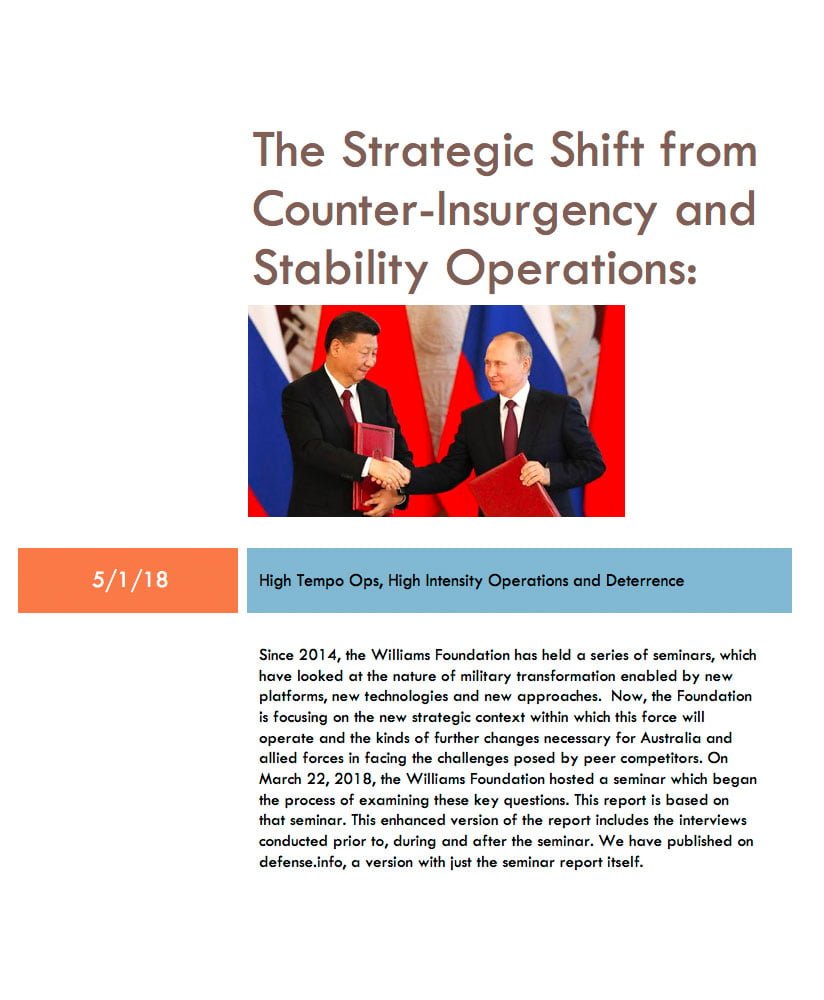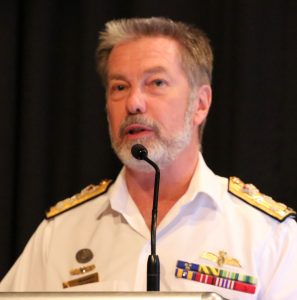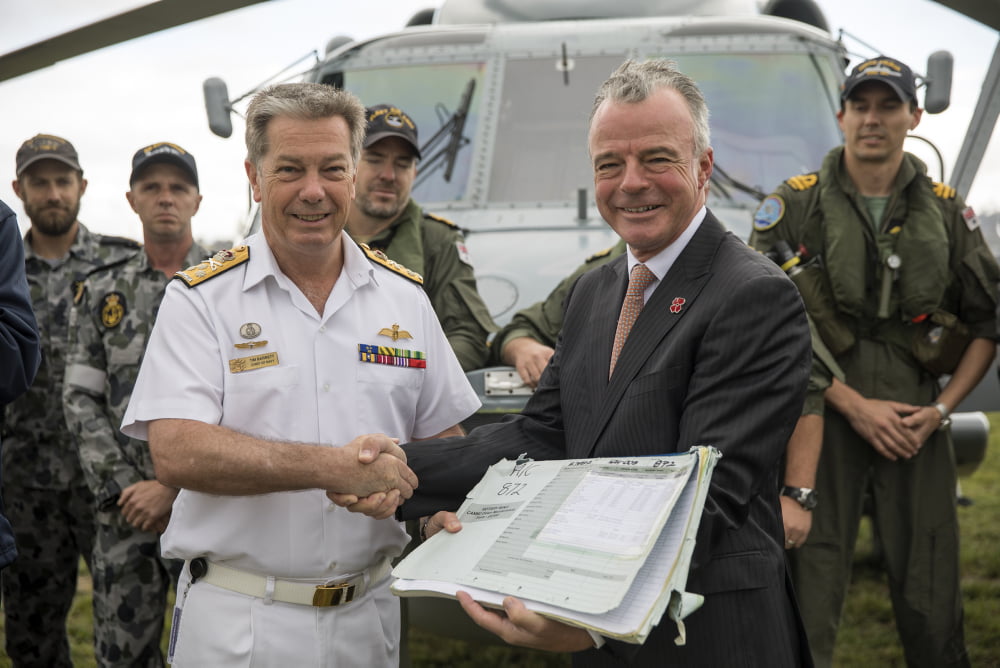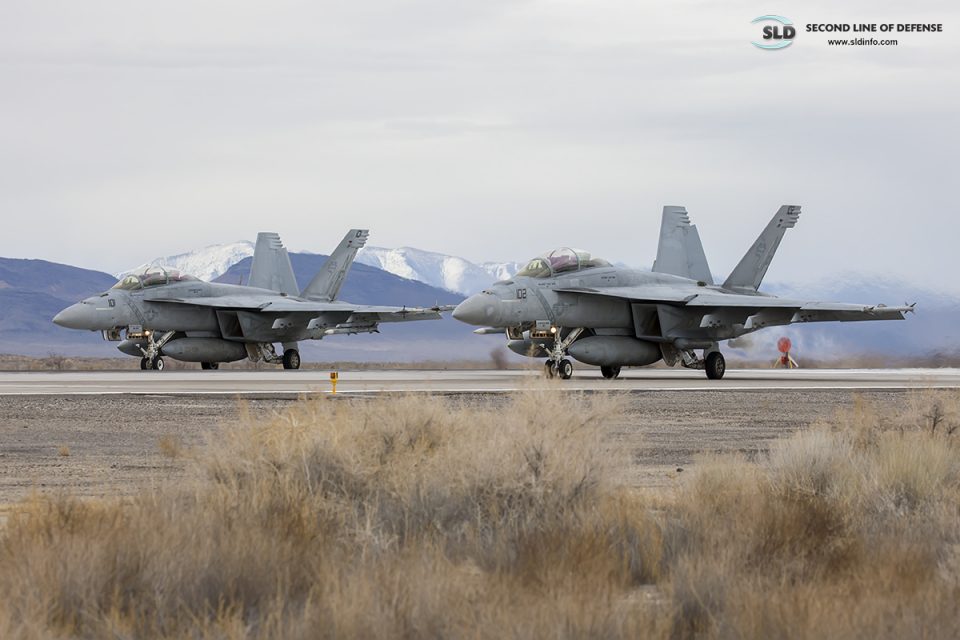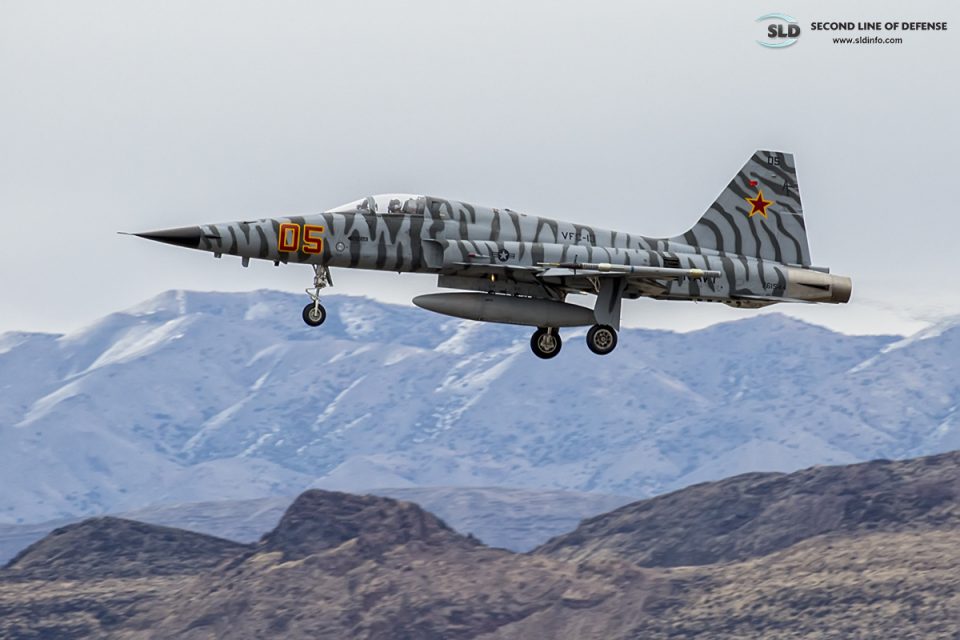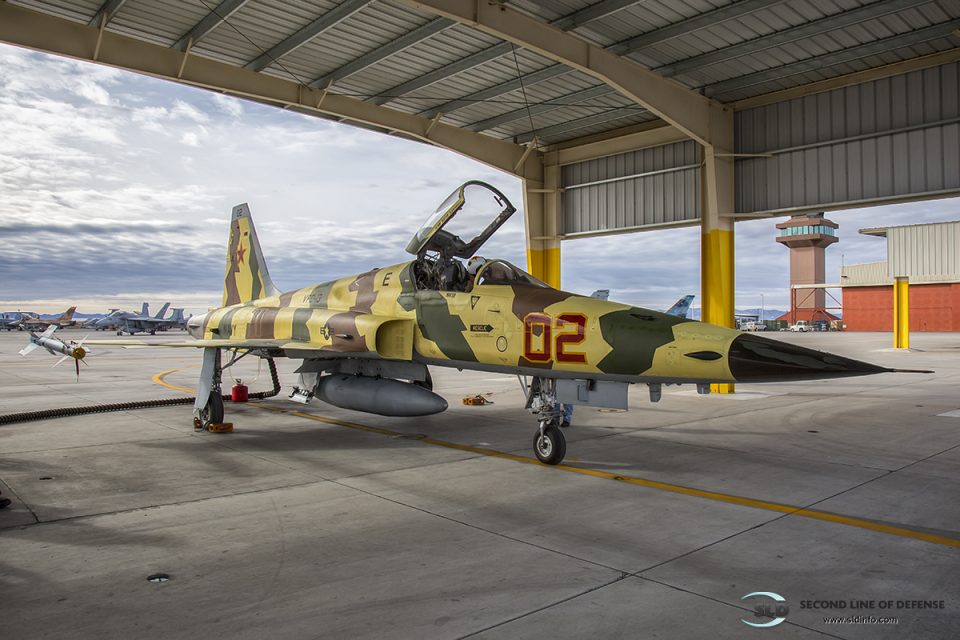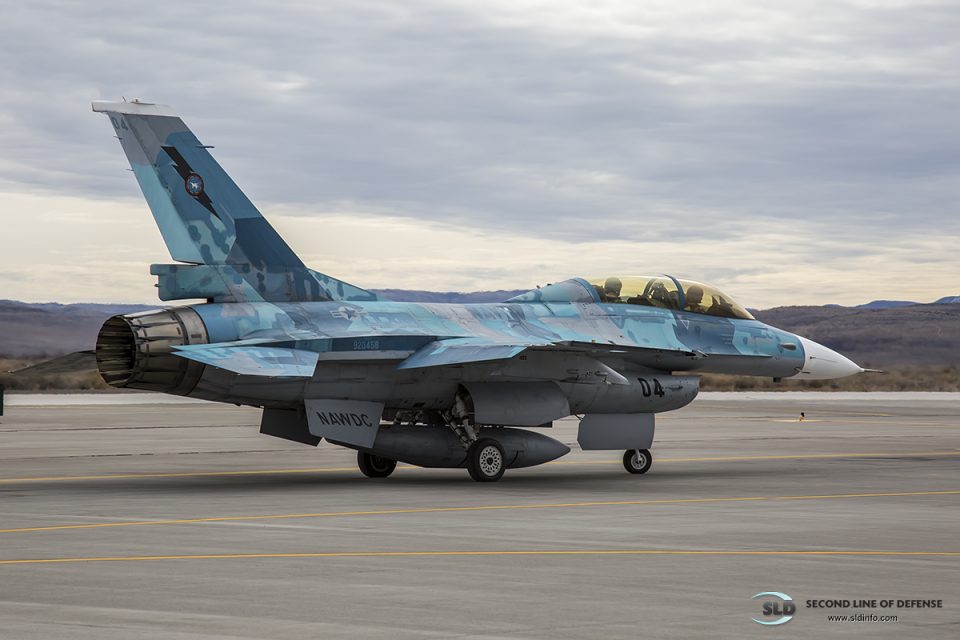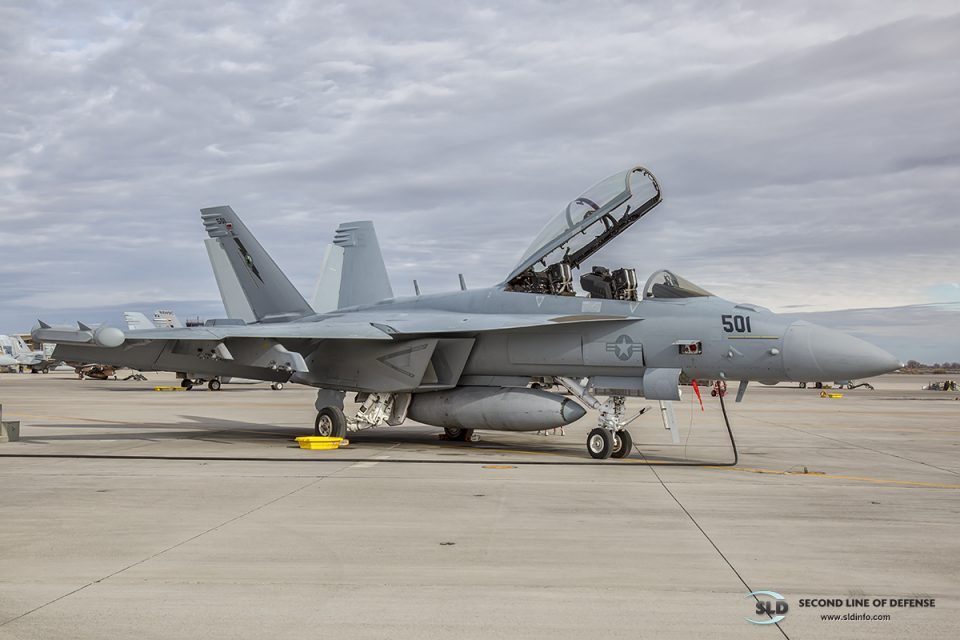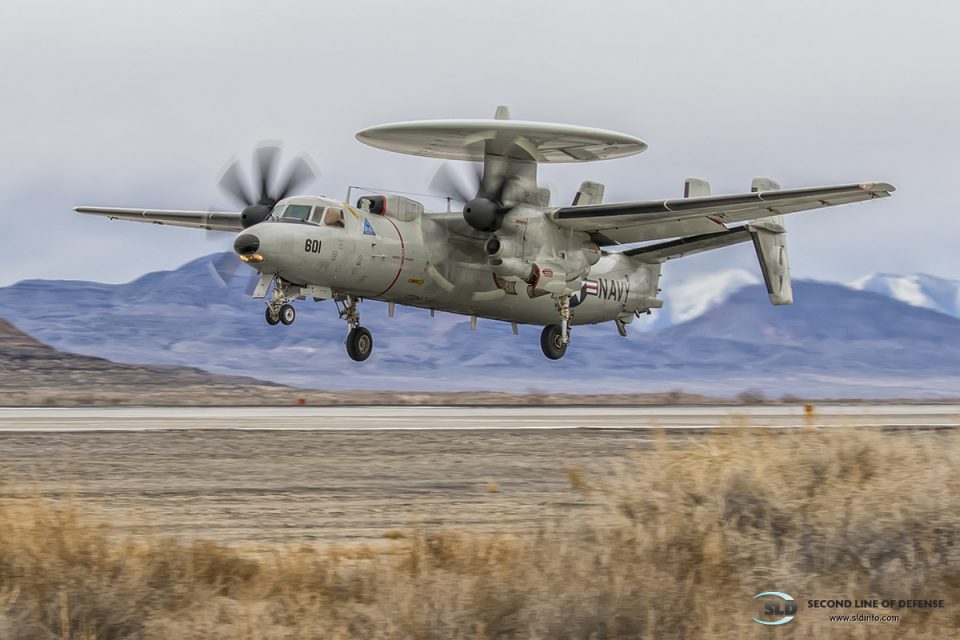Since 2014, the Williams Foundation has held a series of seminars, which have looked at the nature of military transformation enabled by new platforms, new technologies and new approaches.
Now, the Foundation is focusing on the new strategic context within which this force will operate and the kinds of further changes necessary for Australia and allied forces in facing the challenges posed by peer competitors.
On March 22, 2018, the Williams Foundation hosted a seminar which began the process of examining these key questions.
This report is based on that seminar.
This enhanced version of the report includes the interviews conducted prior to, during and after the seminar.
We have published on defense.info, a version with just the seminar report itself.
The US military has been focused along with core allies in dealing with counter-insurgencies for more than a decade, which represents a defining generation of combat experience for the joint, and coalition force. We have an entire generation of military officers with little or no experience in dealing with the direct threat from peer competitors.
With the return of great power conflict and the return of core nuclear questions with the coming of a second nuclear age, force structures are changing along with concepts of operations as well as the need for relevant and effective crisis management strategies.
A strategic shift is underway for the military.
The past decade the military has primarily focused its training and operations dealing with counter-insurgency and stability operations. Now the need to deal with operations in contested air and sea space from adversaries who can bringing significant capability to bear against US and allied forces requires a significant reset of efforts.
It is a strategic space in which operations in contested settings is where the military will operate. It is about learning how to deal with the policies and capabilities of peer competitors who are seeking strategic and military advantage against the liberal democracies.
And this challenge is one which will require the civil leadership to come to terms with the challenge of crisis management in which escalation and de-escalation will have to be mastered as a strategic art form.
It is not just about sending off the military to fights thousands of miles away and welcoming them back from time to time. It will be about facing the adversary squarely and forcing his hand and shaping outcomes to the benefit of the liberal democracies against those of the illiberal powers, and by doing so with using military means as one of the key tool sets
The nature of the threat facing the liberal democracies was well put by a senior Finnish official in a recent briefing: The timeline for early warning is shorter; the threshold for the use of force is lower.
What is unfolding is that capabilities traditionally associated with high end warfare are being drawn upon for lower threshold conflicts, designed to achieve political effect without firing a shot.
Higher end capabilities being developed by China are Russia are becoming tools to achieve political-military objectives throughout the diplomatic engagement spectrum.
The non-liberal powers are clearly leveraging new military capabilities to support their global diplomacy to try to get outcomes and advantages that enhance their position and interests.
The systems they are building and deploying are clearly recognized by the Western militaries as requiring a response; less recognized is how the spectrum of conflict is shifting in terms of using higher end capabilities for normal diplomatic gains.
We have seen several manifestations of a new strategic era in which contested operations require a different approach, a different force structure response, and, above all, shaping a relevant crisis management capability.
It started with the Russian seizure of Crimea, continued with the Russian projection of power into Syria, a rapid expansion of the number of intercepts by Western quick reaction forces in Northern Europe of Russian aircraft, with events such as a simulated Russian strike against Norway’s northern C2 facilities, the Chinese build out into the South China Sea, a very aggressive North Korean nuclear test and missile modernization approach, and significant modernization of the forces of the Chinese, Russians and North Koreans, and Iranians, with real uncertainty about how the edges of warfare begin and end with regard to the use of the increasingly diverse arsenal which the illiberal powers have at their disposal.
And this new period comes as the Western liberal powers are modernizing their own forces, which raises the question of how their modernization processes will be shaped to deal with the new threat dynamics, threat envelopes and evolving strategic behavior and decision-making capabilities of the authoritarian powers.
How will Western liberal democratic military modernization reshape capabilities which Western leaders have to deal with the challenge of the authoritarian powers?
How will conflict with various authoritarian powers be managed to avoid all-out war?
How will escalation management be shaped to ensure that Western democratic interests are met and not put under the pressure of constant compromises which simply allow for the expanded power and influence globally of the authorization states and powers?
Such questions are emerging as key ones for what is shaping up to be a new strategic period ahead for the Western liberal democratic powers.
Featured photo shows Russian President Vladimir Putin (R) shakes hands with his Chinese counterpart Xi Jinping during a signing ceremony following the talks at the Kremlin in Moscow, Russia July 4, 2017. Credit: Sergei Karpukhin | Reuters


